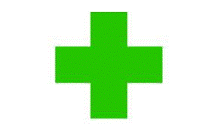Plant Health Program, Doctor of
First Advisor
Xinzheng Chen
Document Type
Doctoral Document
Date of this Version
12-2022
Abstract
Agricultural research has been a focus for academia and industry to improve human well-being. Given the challenges in water scarcity, global warming, and increased prices of fertilizer, and fossil fuel, improving the efficiency of agricultural research has become even more critical. Data collection by humans presents several challenges including: 1) the subjectiveness and reproducibility when doing the visual evaluation, 2) safety when dealing with high toxicity chemicals or severe weather events, 3) mistakes cannot be avoided, and 4) low efficiency and speed.
Image analysis and machine learning are more versatile and advantageous in evaluating different plant characteristics, and this could help with agricultural data collection. In the first chapter, information related to different types of imaging (e.g., RGB, multi/hyperspectral, and thermal imaging) was explored in detail for its advantages in different agriculture applications. The process of image analysis demonstrated how target features were extracted for analysis including shape, edge, texture, and color. After acquiring features information, machine learning can be used to automatically detect or predict features of interest such as disease severity. In the second chapter, case studies of different agricultural applications were demonstrated including: 1) leaf damage symptoms, 2) stress evaluation, 3) plant growth evaluation, 4) stand/insect counting, and 5) evaluation for produce quality. Case studies showed that the use of image analysis is often more advantageous than visual rating. Advantages of image analysis include increased objectivity, speed, and more reproducibly reliable results. In the third chapter, machine learning was explored using romaine lettuce images from RD4AG to automatically grade for bolting and compactness (two of the important parameters for lettuce quality). Although the accuracy is at 68.4 and 66.6% respectively, a much larger data base and many improvements are needed to increase the model accuracy and reliability.
With the advancement in cameras, computers with high computing power, and the development of different algorithms, image analysis and machine learning have the potential to replace part of the labor and improve the current data collection procedure in agricultural research.
Advisor: Gary L. Hein


Comments
A DOCTORAL DOCUMENT Presented to the Faculty of The Graduate College at the University of Nebraska In Partial Fulfillment of Requirements For the Degree of Doctor of Plant Health, Major: Plant Health, Under the Supervision of Professor Gary L. Hein. Lincoln Nebraska: December, 2022
Copyright © 2022 Xinzheng Chen